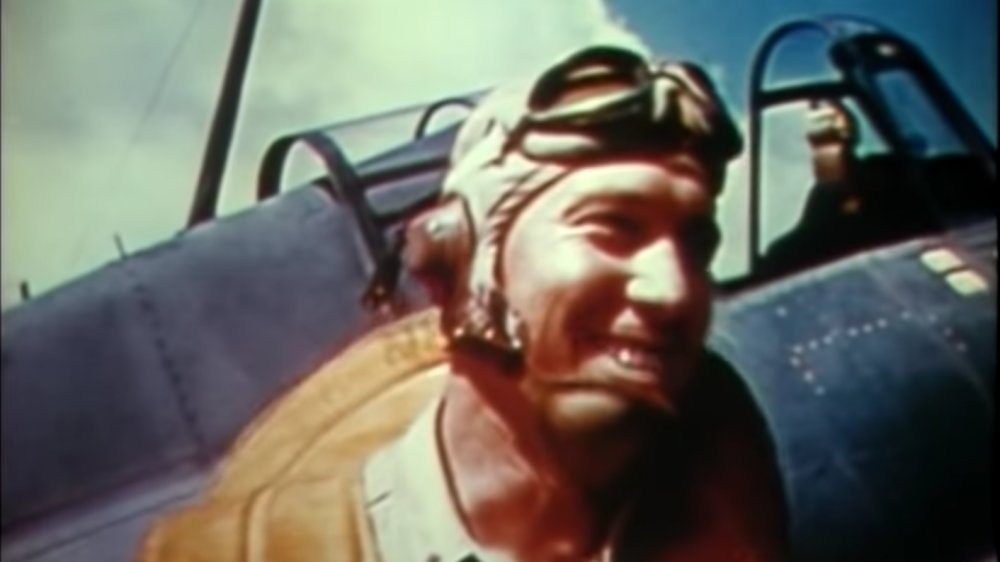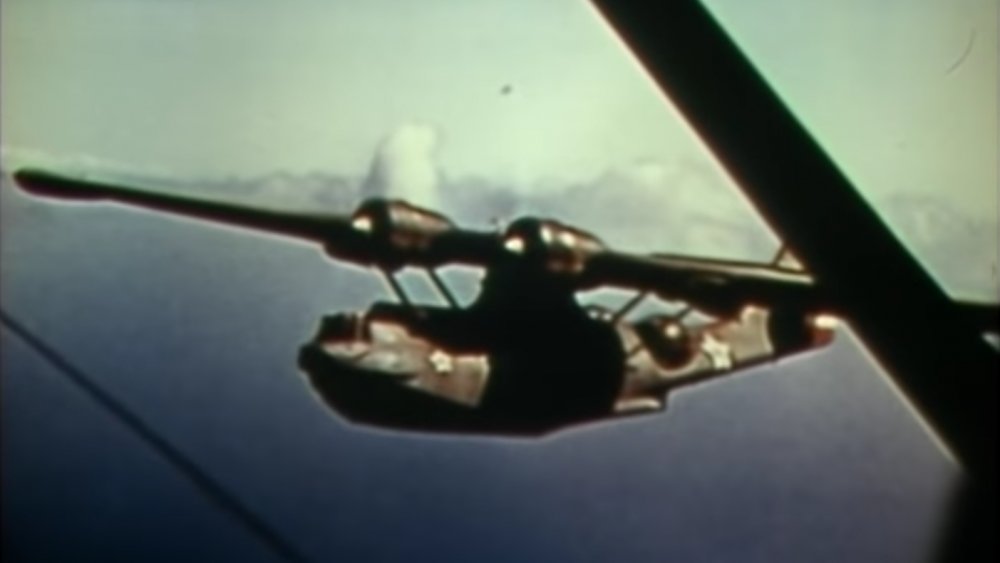The Untold Truth Of The Battle Of Midway
Fought in the emotionally fraught aftermath of the Japanese attack on Pearl Harbor, the Battle of Midway became a Hollywood movie in real time. As recounted by the U.S. Naval Institute, the iconic film director John Ford — who famously worked with John Wayne — directed the Field Photographic Division of the Office of Strategic Services during WWII. In June 1942, Ford was at the Allied base on Midway Island, a natural halfway point between the U.S. and Japan, per History, when he saw incoming Japanese planes in the distance.
Pleased with the devastation wrought by the surprise strike on Pearl Harbor, Japanese Admiral Isaroku Yamamoto hoped lightning would strike twice at Midway. The Japanese were jockeying for dominance in the Pacific Ocean. However, an attempted invasion in the Coral Sea, the previous month, was beaten back by U.S. battleships. This encounter would help decide the outcome of the war, and it was caught on tape.
While Ford was shooting this epic scene, the scene shot back. A blast lodged shrapnel in Ford's shoulder and elbow, knocked him back, and knocked him out. This unbelievable sequence and numerous others would be recreated and somewhat reimagined in the star-studded 2019 film, Midway. But no amount of Nick Jonas could match the magnitude of the unscripted reality that played out.
Going all the way at Midway
Pearl Harbor taught the Japanese that the world's most dangerous element is surprise. And at Midway, they didn't have it. The U.S. Navy anticipated the attack weeks in advance, thanks to a crack staff of code-breakers. History explains that had uncovered plans to attack a place designated "AF." They believed it meant Midway, so they tested the hypothesis by sending a fake message about a fresh water shortage. The Japanese intercepted the message and, just as expected, referred to Midway as "AF."
The U.S. was ready AF when Japanese showed up for their showdown, but it was by no means a downhill battle for the U.S. Things kicked off with a misstep. The Japanese had attacked the Aleutian Islands, drawing American bombers that wrongly thought Japan's main fleet was situated there. The next day, the Japanese hit Midway with a haymaker in the form of 108 warplanes. Initial U.S. on Japanese carriers failed. However, when the Japanese paused to refuel and rearmed the planes, American bombers dropped the hammer. By evening they had put the final nail in the coffin, defeating the Japanese.
The Americans didn't let up, attacking the Japanese for another two days after the main fighting had finished. John Ford's documentary of the action, The Battle of Midway, went on to win an Academy Award, so you could say he recorded history's most successful box office bombs.

